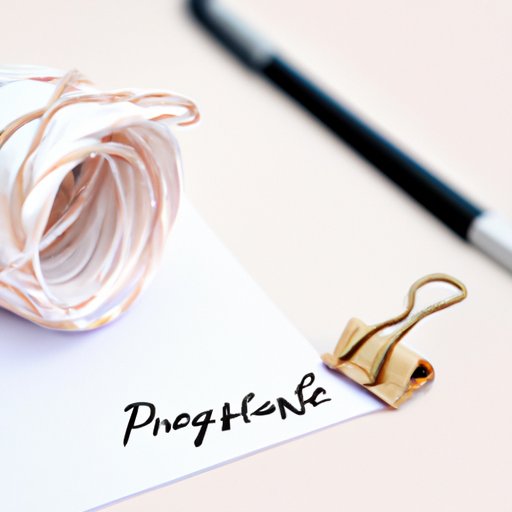How to Write a Winning Proposal: A Step-by-Step Guide
As a writer, you may find yourself tasked with writing a proposal for a potential client or project. A proposal is a document that outlines your plan for solving a problem and persuades the recipient of the proposal to accept your solution. Knowing how to write a proposal is an essential skill for any writer. If you are new to proposal writing or want to improve your proposal writing skills, this article is for you.
Step-by-Step Guide
Define the problem and determine the purpose of the proposal
The first step in writing a proposal is to clearly define the problem you are addressing. What is the problem you are trying to solve? Why is it important to solve this problem? What are the expected outcomes of your proposed solution? Answering these questions will help you determine the purpose and scope of your proposal.
Identify the audience and tailor the proposal to their needs
It is crucial to identify your audience and tailor your proposal to their needs. Who is your audience? What are their expectations? What is their level of expertise relating to the problem you are trying to solve? Understanding your audience and their needs will make your proposal more persuasive.
Research and gather relevant information
Once you have defined the problem and identified your audience, the next step is to research and gather relevant information. This information should include data, statistics, and background information about the problem. You should also research the recipient of your proposal and their requirements.
Develop a strong thesis statement and outline
Your thesis statement is the central argument of your proposal. It should clearly and succinctly state your proposed solution to the problem. After developing your thesis statement, create an outline for your proposal. This outline should include an introduction, body, and conclusion.
Write the introduction, body, and conclusion
The introduction is where you grab your reader’s attention and provide a brief overview of the problem and your proposed solution. The body of your proposal should provide more detailed information about your proposed solution. Use headings and bullet points to make the information easy to read and understand. In the conclusion, restate your thesis statement and provide a clear call to action.
Revise and edit the proposal
After completing your proposal, it is important to revise and edit it. This should include checking for any typos, grammatical errors, and formatting issues. You want your proposal to be polished and professional.
Submit the proposal and follow up with the recipient
After you have finished revising and editing your proposal, it is time to submit it to the recipient. Follow their instructions for submission carefully. You should also follow up with the recipient after submitting the proposal to ensure that they received it and to answer any questions they may have.
Best Practices and Tips
Address common questions and concerns about formatting and content
Some common questions and concerns about proposal writing include what format to use, what content to include, and how to make it persuasive. Your proposal should be easy to read and understand, so use headings, bullet points, and white space to break up the text.
Offer advice on tone, language, and persuasiveness
Your tone should be professional and persuasive. Use clear, concise language and avoid jargon. Be positive and focus on the benefits of your proposed solution.
Discuss the importance of following the guidelines and instructions provided by the recipient
Following the recipient’s guidelines and instructions is critical to the success of your proposal. Failure to follow their guidelines could result in your proposal being rejected or returned for revisions.
Highlight the significance of communicating the benefits and feasibility of the proposed solution
Your proposal should clearly communicate the benefits and feasibility of your proposed solution to the recipient. Make sure to provide evidence to support your claims.
Examples of Successful Proposals
Providing examples of successful proposals can be helpful in demonstrating what works and what doesn’t. Analyzing and breaking down each example to highlight its strengths and weaknesses can also be valuable in improving your own proposals.
Common Mistakes to Avoid
It is important to identify common mistakes that novice writers make when developing and submitting proposals to avoid making these same errors. Providing specific examples and explanations to illustrate the errors can be helpful in understanding why they are mistakes and how to avoid them.
Proposal Templates
There are many proposal templates available that writers can use as models for their own proposals. These can be customized to fit different needs and requirements.
Expert Advice
Expert advice can be valuable in reinforcing the main points of the article and offering takeaways and lessons learned. Quotes, anecdotes, and insights from experts in proposal writing or in the specific field relevant to the proposal can be featured to showcase the diversity of perspectives and strategies for success.
Conclusion
Writing a proposal can be a challenging task, but by following this step-by-step guide and adhering to best practices and tips, you can write a winning proposal that persuades the recipient to accept your solution. Avoiding common mistakes and using templates and expert advice can help improve your proposals for future projects.
